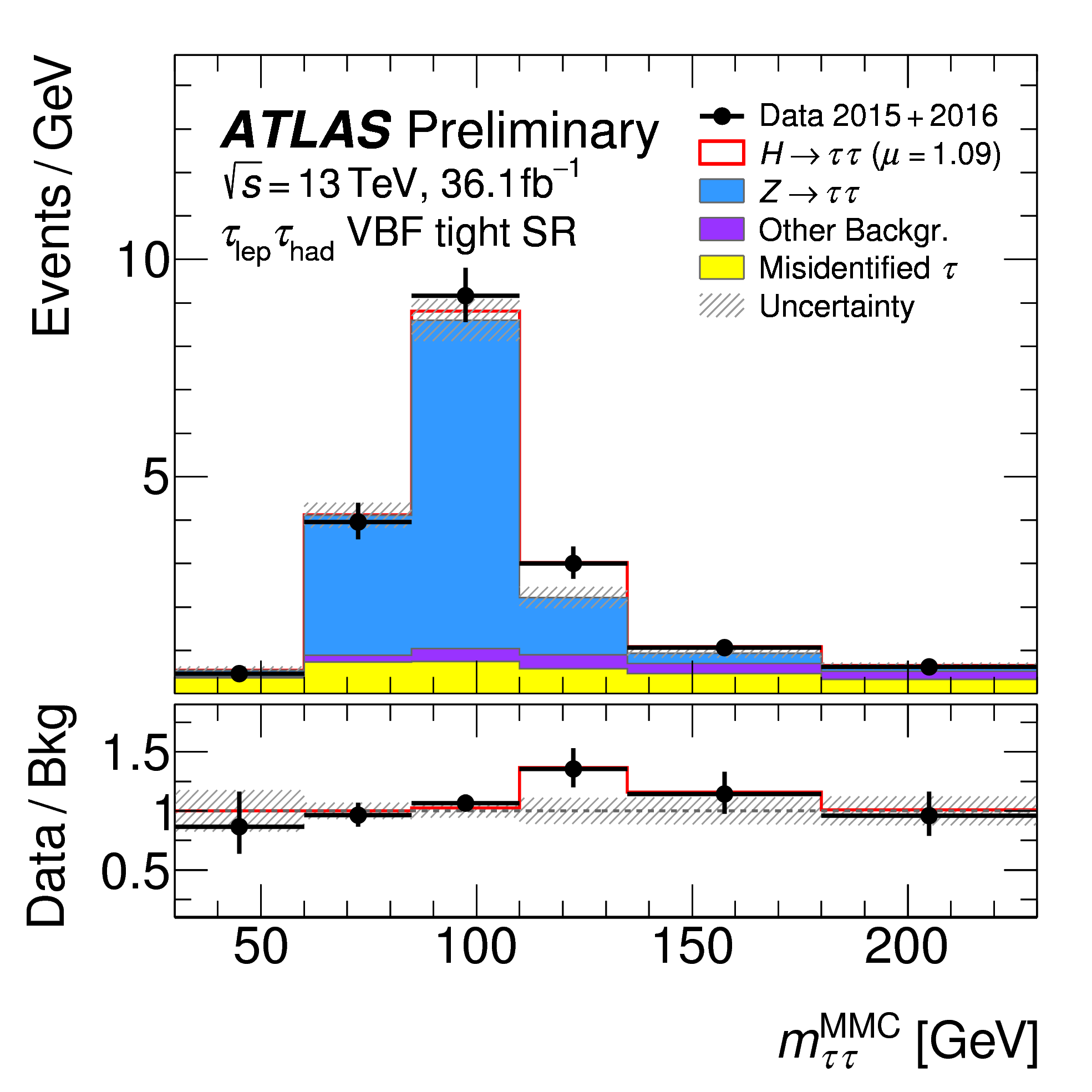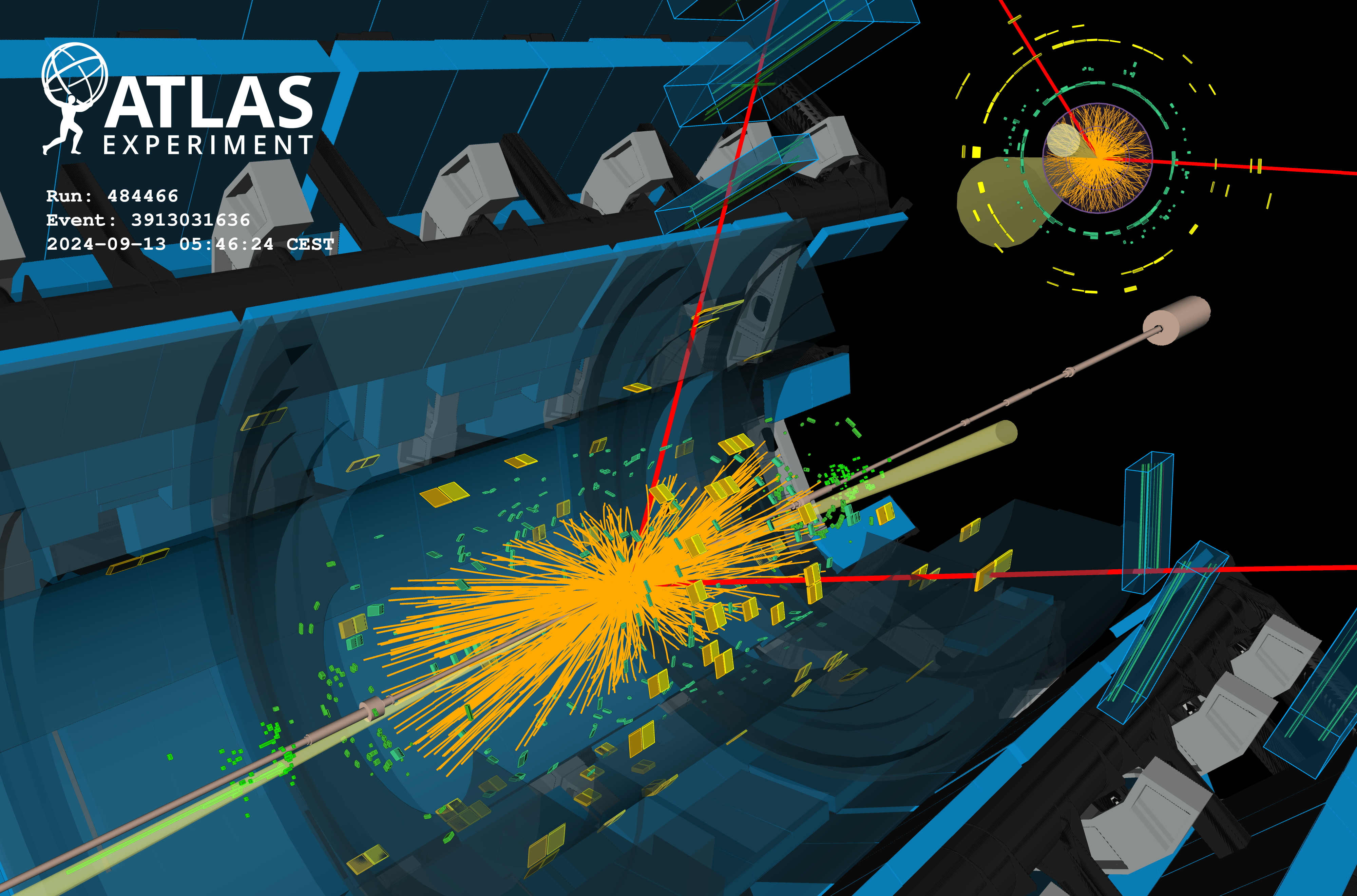Beyond any doubt: Higgs boson couples to the heaviest lepton
8 June 2018 | By

A decisive property of the Higgs boson is its affinity to mass. The heavier a particle is, the stronger the Higgs boson will couple to it. While physicists have firmly established this property for heavy W and Z bosons (force carriers), more data are needed to measure the Higgs boson coupling to the heavy fermions (matter particles). These interactions, known as Yukawa couplings, are very interesting as they proceed through a quite different mechanism than the coupling to force-carrying bosons in the Standard Model.
In certain new physics models, Yukawa couplings deviate from their Standard Model predictions. Analyses of the LHC Run 2 dataset are resulting in the first in-depth studies of these interactions, as seen in the recent ATLAS observation of a Higgs boson produced with a top-quark pair.
Decay to heaviest lepton
The ATLAS Collaboration has just released a measurement of the cross section of the Higgs boson decaying to a pair of tau leptons, the heaviest known leptons. The new result is an unambiguous observation of this decay with a significance of 6.4 standard deviations. To achieve this, physicists combined 13 TeV data taken in 2015-2016 with earlier 7 and 8 TeV data. It confirms previous analyses of this channel, including initial evidence seen by ATLAS in 2013, the combined ATLAS and CMS observation published in 2016, and a recent CMS measurement.
The measured total production cross section of 3.7 picobarns, with an uncertainty of 28%, is well in agreement with the Standard Model prediction, but leaves also room for new physics contributions to be unveiled with more data. The result also disentangles the two most common Higgs production mechanisms: so-called gluon-gluon fusion and weak boson fusion. Again, within uncertainties, these measurements are fully consistent with the Standard Model.
Listening to the data
The analysis was very challenging as the tau lepton is short-lived and can only be observed through its decay products of which at least one is always an invisible neutrino. The unknown momentum taken away by the neutrino makes the tau-lepton reconstruction incomplete and thus susceptible to backgrounds. Events with tau leptons are moreover difficult to select online (trigger) when the visible tau decay products are hadrons. To make thing worse, the Z boson, which also decays to a tau-lepton pair, being relatively close in mass to the Higgs but much more abundant, represents a large source of background.
Using information from various ATLAS sub-detectors, an estimate of the Higgs boson mass was computed for each candidate event and provided a decisive handle to disentangle the Higgs boson from the close-by Z. To verify the analysis, ATLAS physicists use the recorded data in well-understood regions called control regions. These regions are meticulously designed to select background events mimicking the Higgs boson. They provide a key check that the understanding of the detector and the numerous background processes is as accurate as needed to perform the measurement.
Bright prospects
The new tau lepton result from ATLAS lays the ground for studying Higgs to tau-pair decays in detail. It is not only the mere frequency of these decays, but also the tiny details in their properties, which may open a new window to search for signs of new physics. With the much larger dataset available at the end of Run 2, these details can now be studied.
Links:
- Cross-section measurements of the Higgs boson decaying to a pair of tau leptons in proton–proton collisions at 13 TeV with the ATLAS detector (ATLAS-CONF-2018-021).
- See the following LHCP2018 talks: Status and highlights from the ATLAS experiment (K. Nagano), Higgs couplings to fermions at the ATLAS and CMS experiments (C. Grefe), and Experimental results using the decay of the Higgs to taus and muons (ATLAS + CMS) (M. Meyer).
- Measurements of the Higgs boson production and decay rates and constraints on its couplings from a combined ATLAS and CMS analysis of the LHC proton-proton collision data at 7 and 8 TeV (J. High Energ. Phys. (2016) 45).
- CMS Collaboration: Observation of the Higgs boson decay to a pair of τ leptons with the CMS detector (Phys. Lett. B 779 (2018) 283).
- See also the full lists of ATLAS Conference Notes and ATLAS Physics Papers.



